Imagine a world before the iconic saber-tooth cat flashed its famous fangs—a wild, mysterious planet where even stranger feline hunters prowled the shadows. From armored giants to nimble climbers, these ancient cats were the original masters of stealth and ferocity. Ready to meet the real OGs of prehistory? Let’s leap into the deep past and discover 10 predatory cats who ruled long before the saber-tooth ever sharpened its smile.
Proailurus: The “First True Cat”
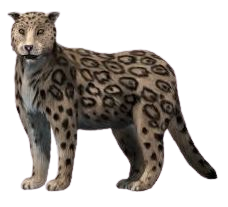
Meet Proailurus, a sleek and agile predator that prowled the Earth around 25 million years ago. Imagine a housecat, but with a longer, more muscular body, a luxurious bushy tail, and exceptional tree-climbing skills. Believed by scientists to be one of the earliest true members of the cat family, Proailurus combined keen senses, stealth, and lightning-fast reflexes to hunt small mammals and birds with deadly precision. Think of it as the prototype of today’s feline—nature’s original ninja in fur.
Pseudaelurus: The Versatile Stalker

With a name meaning “false cat,” Pseudaelurus prowled across Eurasia and North America nearly 20 million years ago, bridging the gap between ancient proto-cats and the big cats we know today. Resembling a hefty, oversized tabby, it was built for versatility, thriving in diverse habitats from dense forests to open plains and rocky highlands. Its adaptable nature and evolving traits laid the evolutionary groundwork for both modern big cats and the formidable saber-toothed predators. In many ways, Pseudaelurus was the pivotal feline pioneer of its time.
Dinictis: The Saber-Tooth’s “Grandparent”

Dinictis, a sleek predator from 30 million years ago, sported short but deadly saber-like teeth and a powerful build. Picture a bobcat with a dramatic underbite and the attitude to match, stalking the ancient grasslands in search of prey—from nimble rodents to early species of horses. As one of the earliest members of the saber-toothed lineage, Dinictis paved the way for its more famous, fearsome descendants. If cats held family reunions, Dinictis would proudly show off its saber roots as the original cool ancestor.
Nimravus: The Nimble Climber
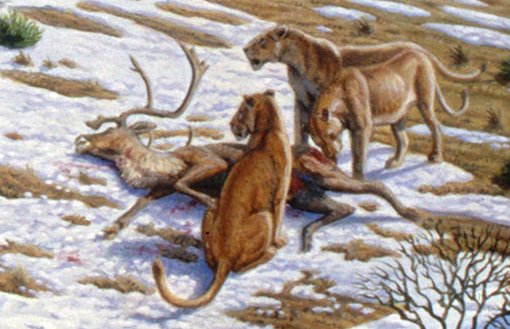
Nimravus resembled a lean, elongated cougar, distinguished by its slightly extended canine teeth that hinted at the saber-toothed cats to come. Living around 25 million years ago, it likely used its agility to leap through trees and ambush unsuspecting prey from above. With its sleek build and athletic prowess, Nimravus was the undisputed parkour master of the prehistoric wilds. It combined stealth, speed, and style—an early predator built for both power and precision.
Hoplophoneus: The Fierce Fighter
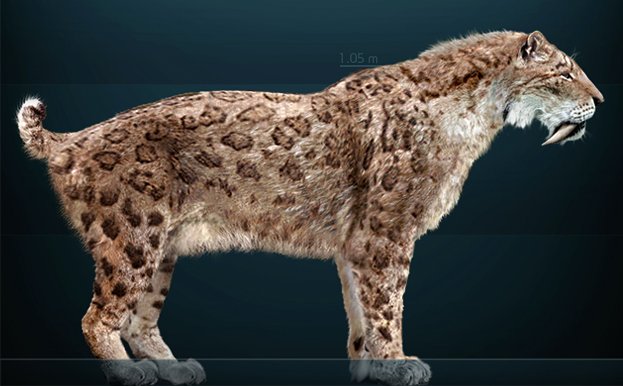
Hoplophoneus was a fearsome predator with razor-sharp saber-like fangs and a stocky, muscular frame, dominating North America roughly 33 million years ago. Its fossilized skull often bears deep gouges and punctures—evidence of brutal face-to-face battles with rivals over territory or mates. This was no timid hunter; Hoplophoneus was built for confrontation, using both strength and intimidation to rule its domain. In the ancient world of saber-toothed carnivores, it was a warrior cat that didn’t just survive—it fought to thrive.
Quercylurus: The Massive Tree Dweller
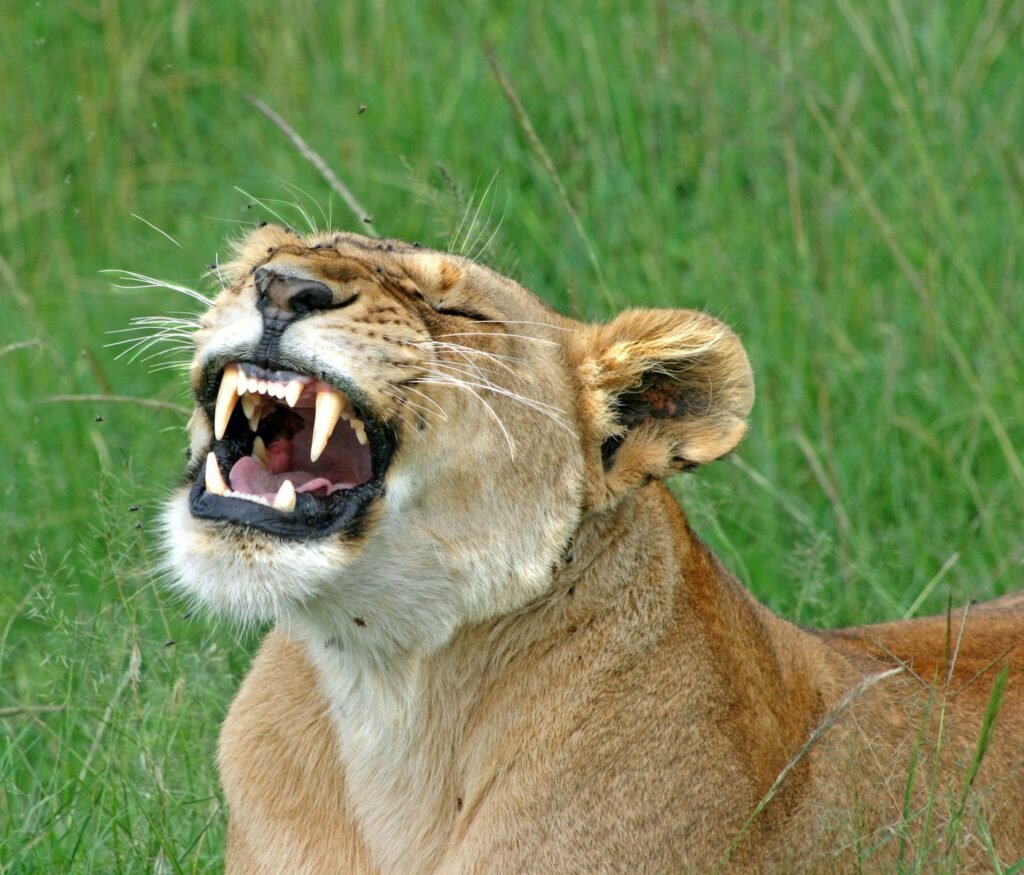
Quercylurus was a true heavyweight of the prehistoric cat world, tipping the scales at up to 440 pounds—making it one of the largest nimravids ever known. Unlike most big-bodied predators, it took to the trees with surprising agility, using the high ground to launch devastating ambushes on unsuspecting prey. Picture a leopard with the bulk and power of a linebacker, silently waiting above for the perfect moment to strike. This arboreal titan turned the treetops into a deadly hunting ground.
Paramachairodus: The “False Saber-Tooth”
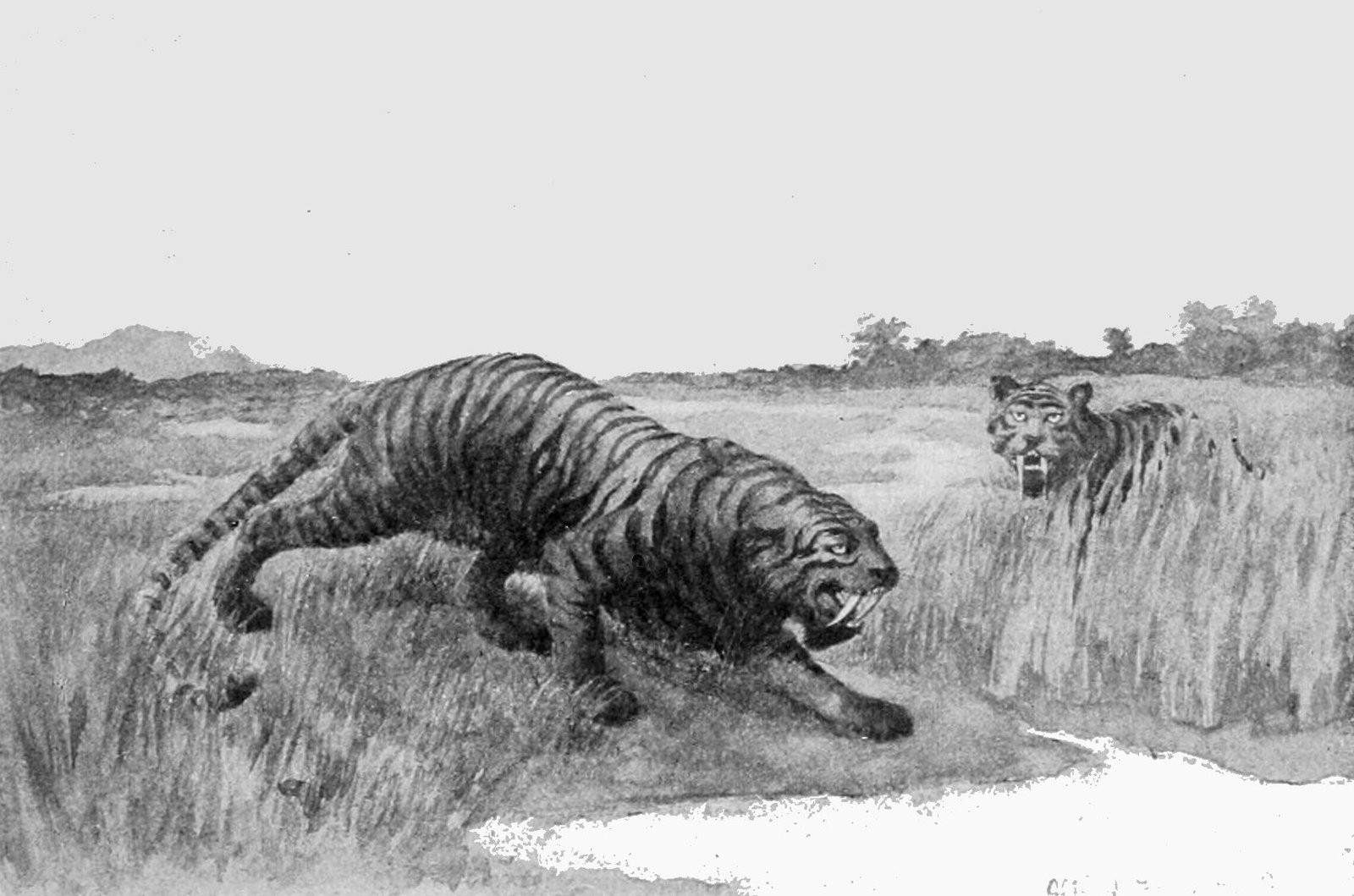
Paramachairodus looked like a saber-tooth in training, with smaller, more refined fangs that hinted at the fierce lineage to come. Living between 10 and 15 million years ago, it was a sleek, graceful predator built for speed and stealth. Its hunting strategy likely relied on shadowy ambushes followed by explosive chases—imagine a panther with just enough saber-toothed flair to surprise its prey. Quiet, quick, and deadly, Paramachairodus was a stealth assassin of the Miocene world.
Eusmilus: The Blade-Toothed Sprinter
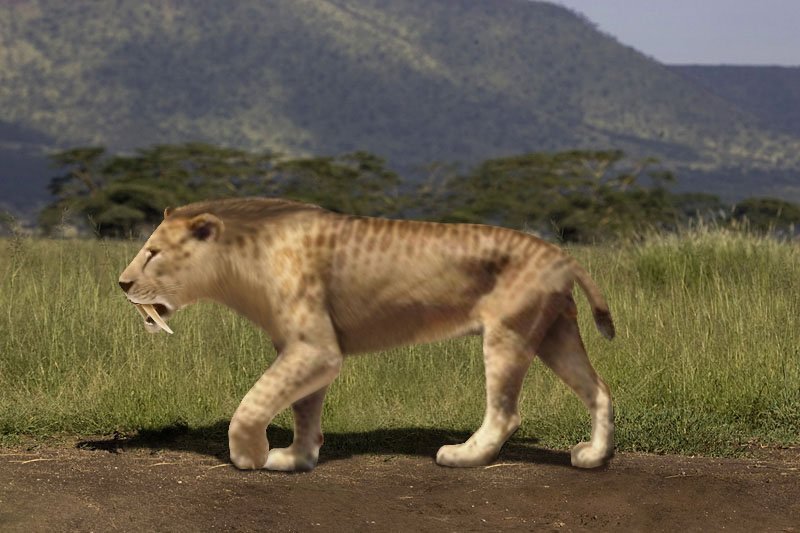
Eusmilus combined the streamlined grace of a cheetah with the deadly precision of a bladed weapon, thanks to its long, knife-like upper canines. With a slender, athletic build, it could chase down prey at high speeds, delivering swift, fatal bites with surgical efficiency. This predator didn’t just run—it cut through the competition like a living weapon. Think of it as nature’s fusion of a cheetah and a razor-sharp steak knife, built for speed and savagery.
Pogonodon: The Bearded Cat
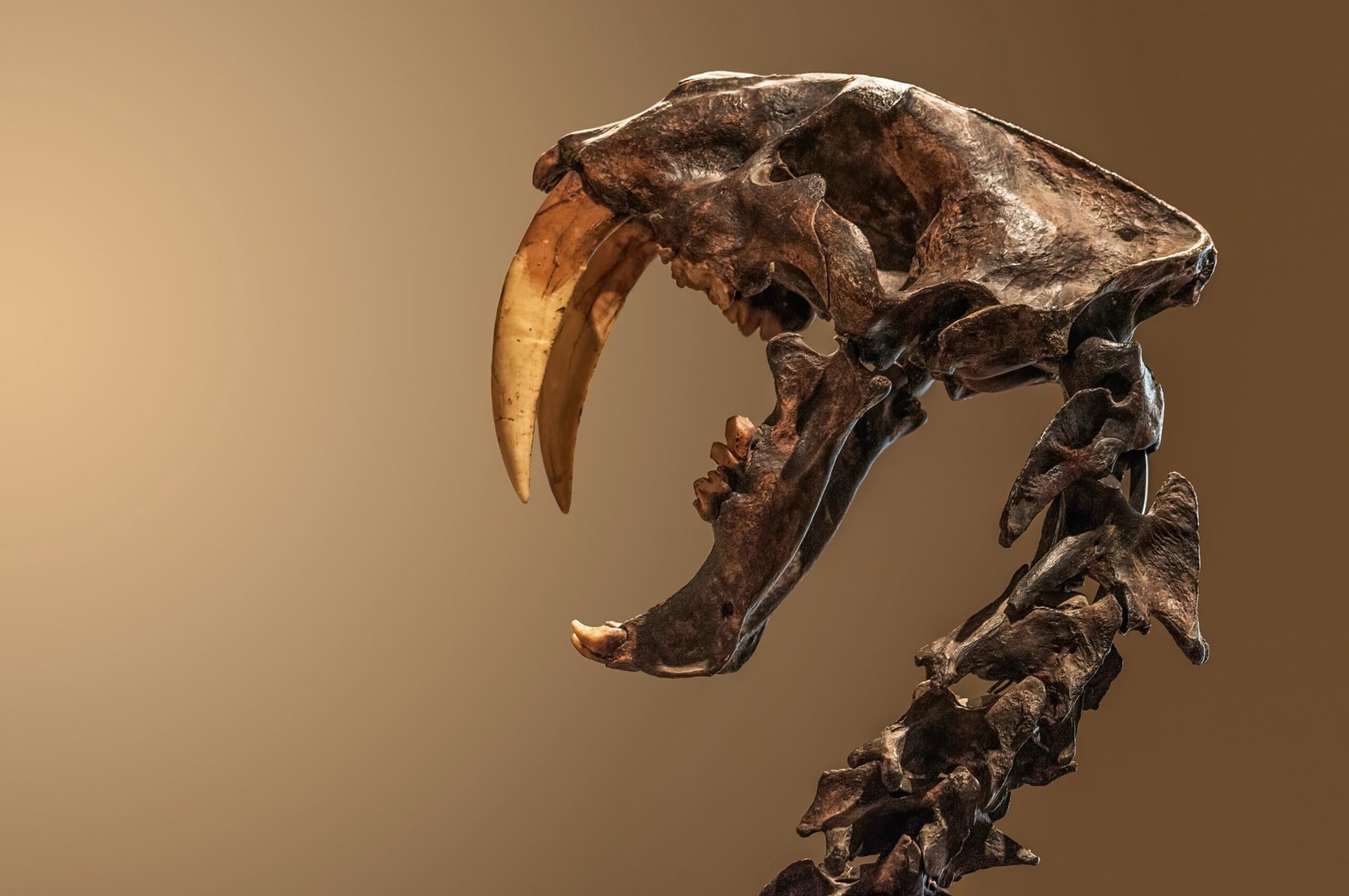
Pogonodon, meaning “bearded tooth,” earned its name from the distinctive shape of its lower jaw and teeth, which gave it a bold, almost bearded look. Roaming North America millions of years ago, it may have specialized in hunting tough-skinned prey, using its unique dental structure to pierce through hide and flesh with ease. Its unusual features set it apart from other saber-toothed predators, blending function with flair. With its one-of-a-kind jaw and fierce hunting skills, Pogonodon was a true icon of prehistoric style and survival.
Barbourofelis: The Armored Cat
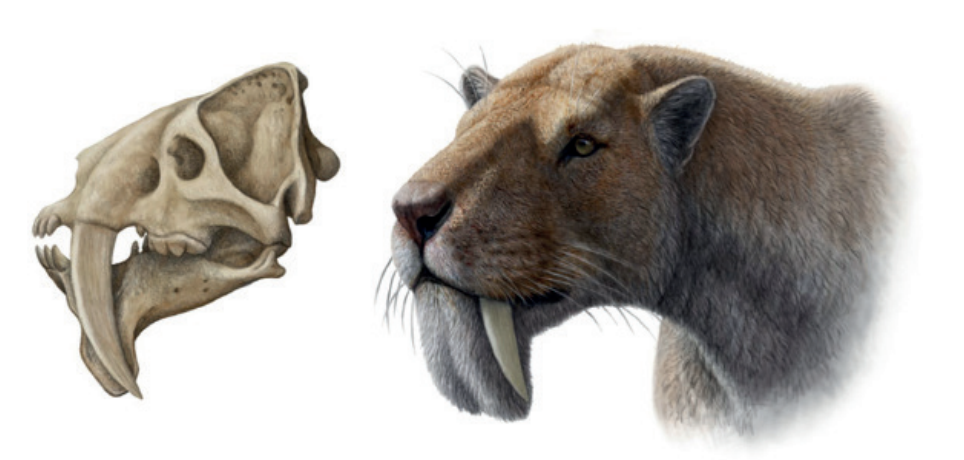
Barbourofelis was the powerhouse of prehistoric predators—a heavily built cat with thick, reinforced bones and intimidating saber-like fangs. Living around 13 million years ago, it wasn’t built for speed, but for strength, likely using its sheer muscle to grapple and overpower large prey in close combat. Its robust frame suggests it could take down animals far bigger than itself, pinning them with brute force before delivering a fatal bite. Picture a sumo wrestler armed with claws and fangs—slow, steady, and absolutely unstoppable.
Metailurus: The Long-Limbed Leaper

Metailurus stood out among ancient cats with its unusually long legs, built for powerful bounds across open grasslands and agile leaps after swift prey. Its semi-retractable claws suggest a versatile lifestyle that blended speed, agility, and climbing ability—an all-terrain predator of its time. Whether sprinting, scaling trees, or pouncing from cover, Metailurus moved like a feline track star with a wild edge. This sleek hunter was evolution’s answer to speed and adaptability wrapped in a muscular, whiskered package.
Machairodus: The Prehistoric Prankster
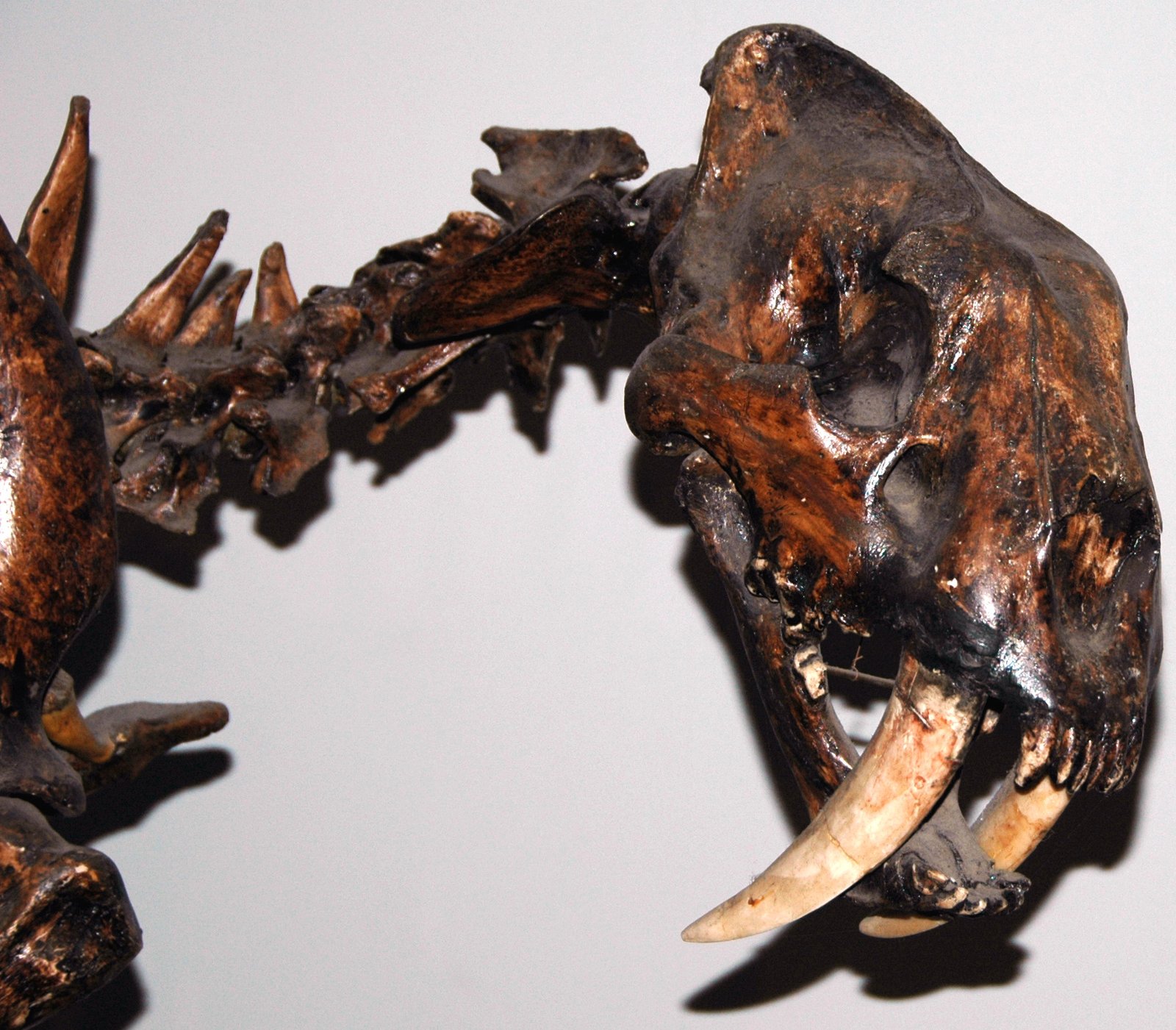
Machairodus was a formidable saber-toothed cat ancestor, known for its dramatically elongated upper canines and a sly, almost mischievous expression etched into its fossilized face. Living around 12 million years ago, it likely prowled dense forests, using those iconic fangs not just for hunting, but to intimidate rivals and assert its dominance without a fight. Its fierce appearance may have been as much about psychological warfare as physical prowess. Who knew ancient cats had both teeth and attitude to spare?
Palaeofelis: The Shadowy Ambusher

Palaeofelis remains an enigma of the ancient world, known primarily from scattered fossil fragments that hint at its stealthy nature. Despite the limited evidence, scientists believe it was a sleek, shadow-dwelling ambush predator, mastering the art of stillness and surprise. Lurking in the darkness, it likely waited for the perfect moment to strike, relying on silence and timing rather than brute force. Think of it as the original “wait in the dark and pounce” professional—an early icon of feline patience and precision.
Stenailurus: The Streamlined Hunter
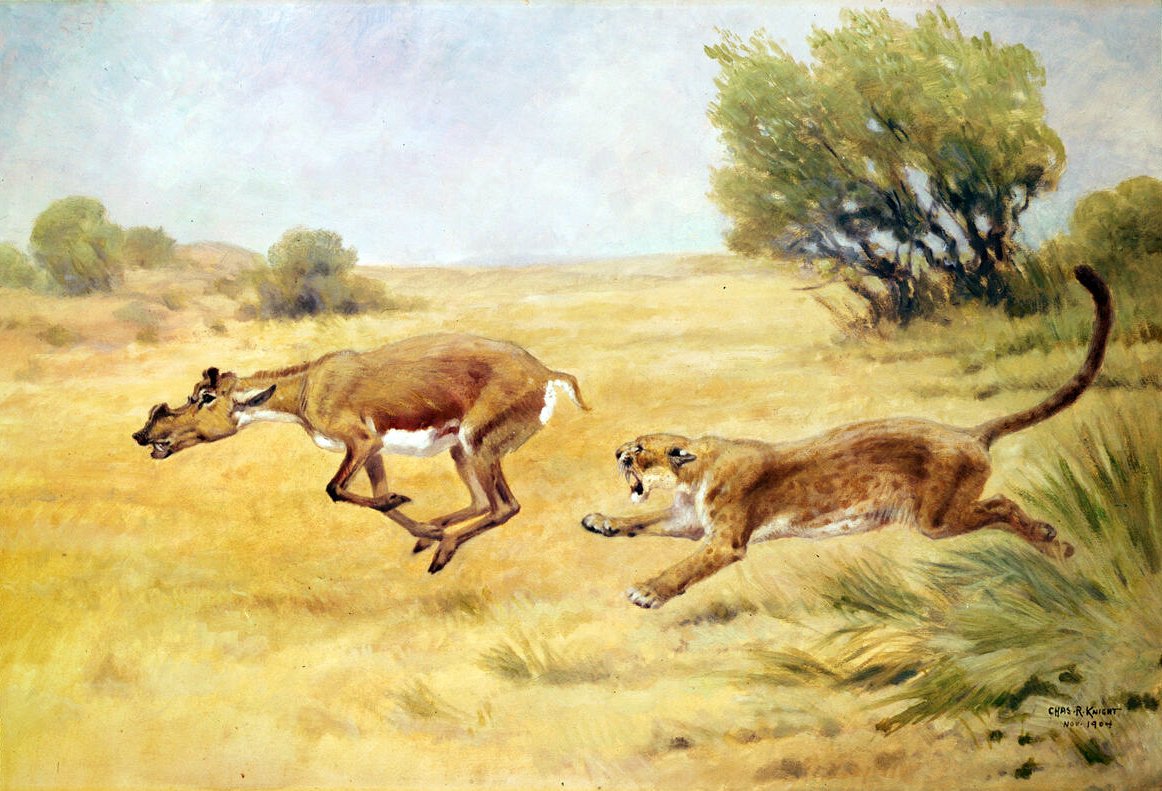
Stenailurus was a sleek, speed-driven predator with a long, narrow skull and a body sculpted for chasing down fast-moving prey. Built for life on the open plains, it relied on its aerodynamic frame and powerful legs to close the distance in high-speed pursuits. Its streamlined design made it a relentless runner—proof that the feline love for the chase dates back millions of years. In the race for survival, Stenailurus was one of prehistory’s original sprinters.
Afrosmilus: The African Pioneer
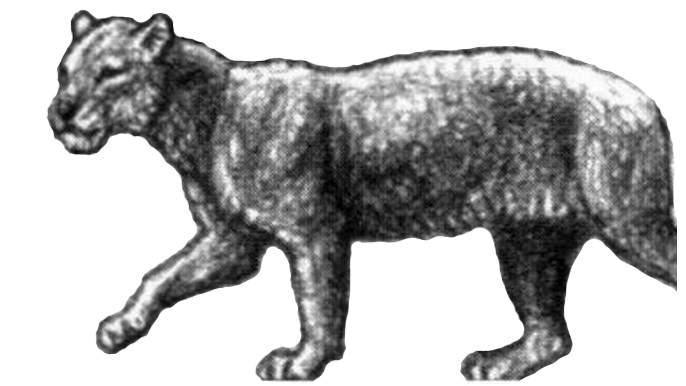
Afrosmilus roamed the African landscapes nearly 20 million years ago, long before today’s lions or leopards claimed the throne. With its sleek frame and signature saber-like teeth, it was a stealthy yet powerful predator, likely dominating the ancient savannas with silent confidence. Its build suggests a hunter built for precision and agility, striking fast and fading into the tall grass. Picture the original king of the jungle—only leaner, meaner, and flashing a much sharper smile..
Metailurus major: The Giant Leaper
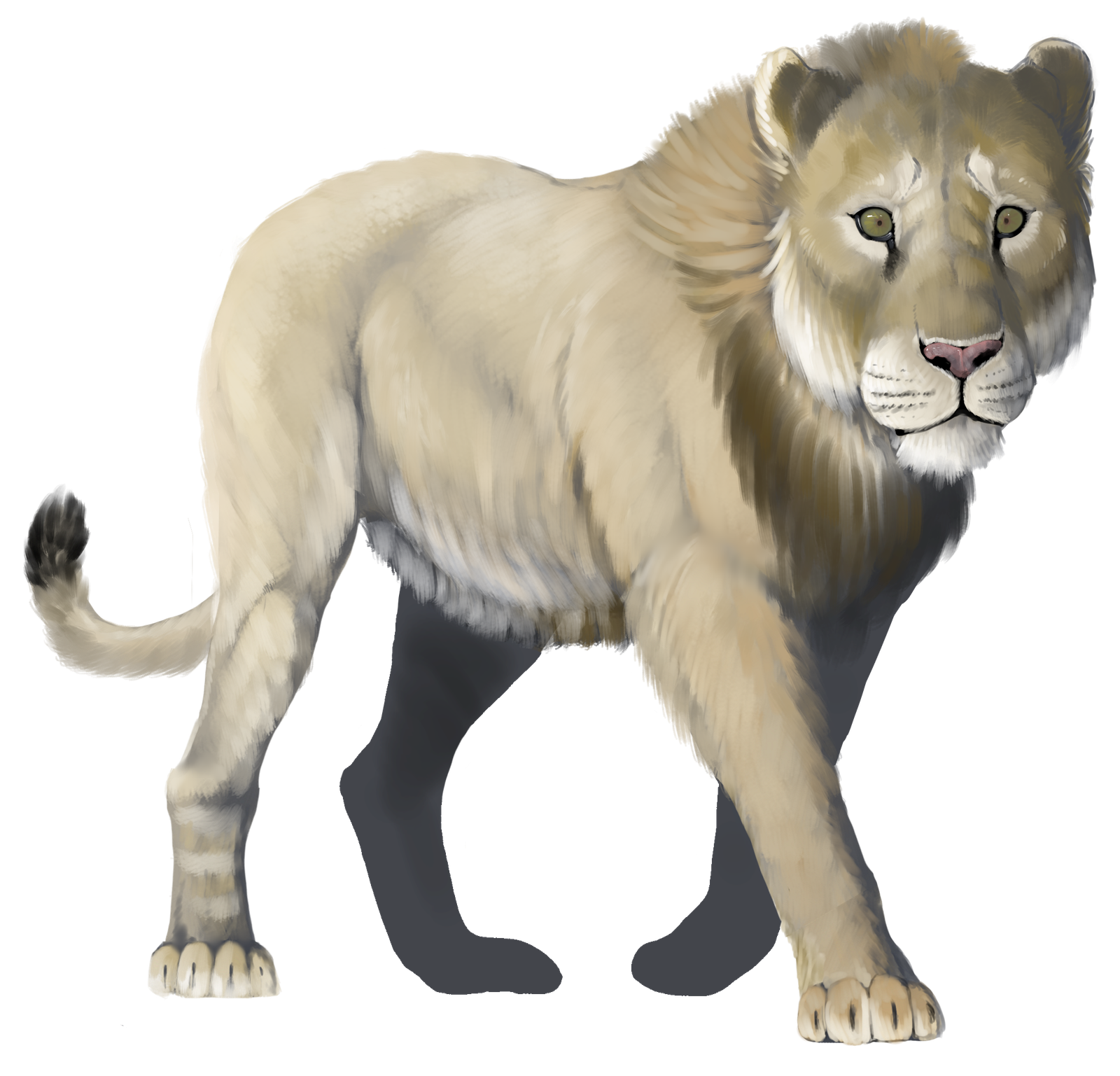
Metailurus major was a supercharged version of its agile relatives, boasting the strength and size to bring down prey twice its own weight. With powerful hind legs built for explosive leaps, it could ambush from a distance or launch itself onto unsuspecting targets with deadly force. This prehistoric predator was a master of vertical and horizontal movement—imagine a kangaroo’s leap paired with a mountain lion’s killing instinct. In the ancient wild, Metailurus major wasn’t just fast—it was fearsomely unstoppable.
Dinailurictis: The Small but Mighty Cat
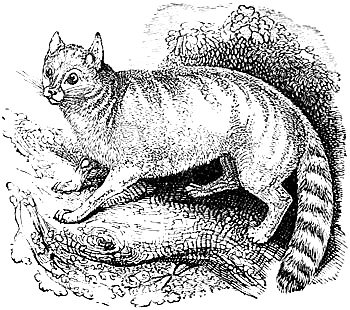
Dinailurictis may not have been the largest predator of its time, but it more than made up for it with agility, cunning, and lightning-fast reflexes. Roughly the size of a modern lynx, this stealthy hunter thrived on speed and surprise, striking before its prey even sensed danger. Its lean frame and sharp instincts made it a silent force to be reckoned with. A true testament that in the prehistoric wild, power didn’t always come in giant packages.
Prosansanosmilus: The Ancient Specialist

Prosansanosmilus stood out among ancient cats with a distinctive jaw structure that hints at a highly specialized diet, possibly targeting prey others avoided. Though much about its behavior remains a mystery, its unique anatomy suggests it had evolved its own clever hunting strategies. This elusive predator may have been one of the first to refine its tastes, picking meals with precision rather than brute force. Could it be the original feline foodie? Quite possibly—and with a bite to back it up.
Paramachaerodus: The Stealthy Stalker

Paramachaerodus was the silent stalker of the ancient world, built for stealth and precision rather than speed or strength. With a low-slung, muscular body designed to creep undetected through brush and shadows, it excelled at getting dangerously close before launching its attack. Its long, slender saber-like fangs weren’t just for show—they were the final, deadly flourish in a flawlessly executed ambush. This was a predator that turned patience and silence into an art form.
Nimravides: The Cat with a Bite
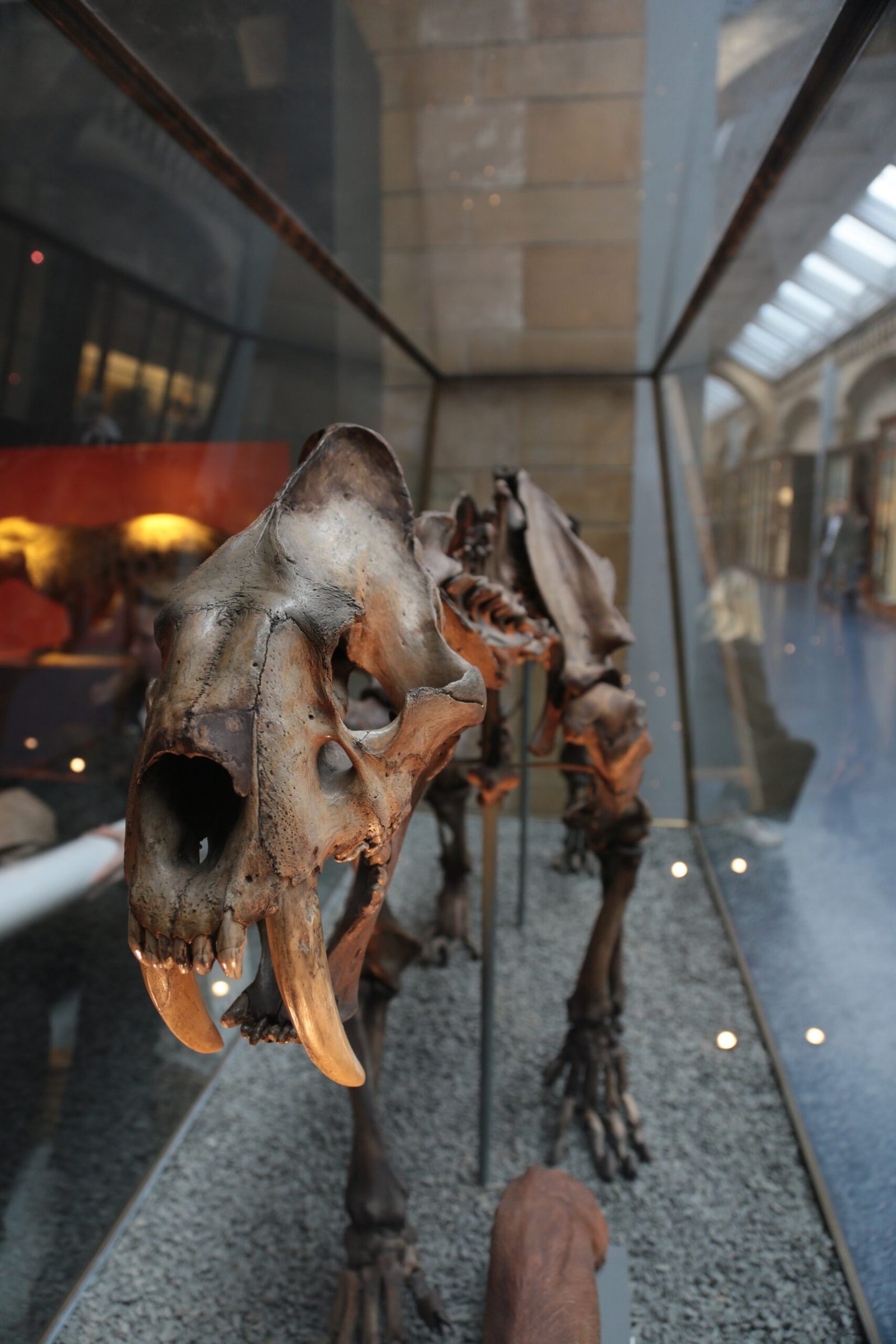
Nimravides was a striking blend of lion-like power and saber-toothed menace, boasting strong jaws and razor-sharp teeth tailored for tearing into tough prey. Roaming across North America and Europe, it adapted to a range of environments, proving its versatility as a top predator. Its evolutionary mix of traits highlights how ancient cats were constantly refining their hunting tools. When it came to securing a meal, Nimravides was a true innovator in the art of the kill.
Sansanosmilus: The Oddball Carnivore

Sansanosmilus stood out from its saber-toothed relatives with short, thick canines and a stocky, muscular build—an unconventional look in a world of sleek predators. While it may not have had the dramatic fangs of its cousins, its powerful frame suggests it relied on brute force and close-quarters combat to take down prey. This quirky combination of traits proves that evolution isn’t just about elegance—it’s about what works. In the grand experiment of nature, Sansanosmilus was a reminder that sometimes, the oddballs come out on top.
Herpailurus: The Quiet Hunter

Herpailurus was a lone hunter, choosing solitude over social packs as it navigated the dense, ancient forests with quiet precision. With razor-sharp senses and whisper-soft footsteps, it became a master of silent stalking, striking before its prey even sensed danger. This elusive feline thrived in the shadows, embodying the art of stealth long before it became a modern predator’s trademark. In the prehistoric world, Herpailurus was the original shadow—stealth mode fully activated.
Diamantofelis: The Sparkling Predator
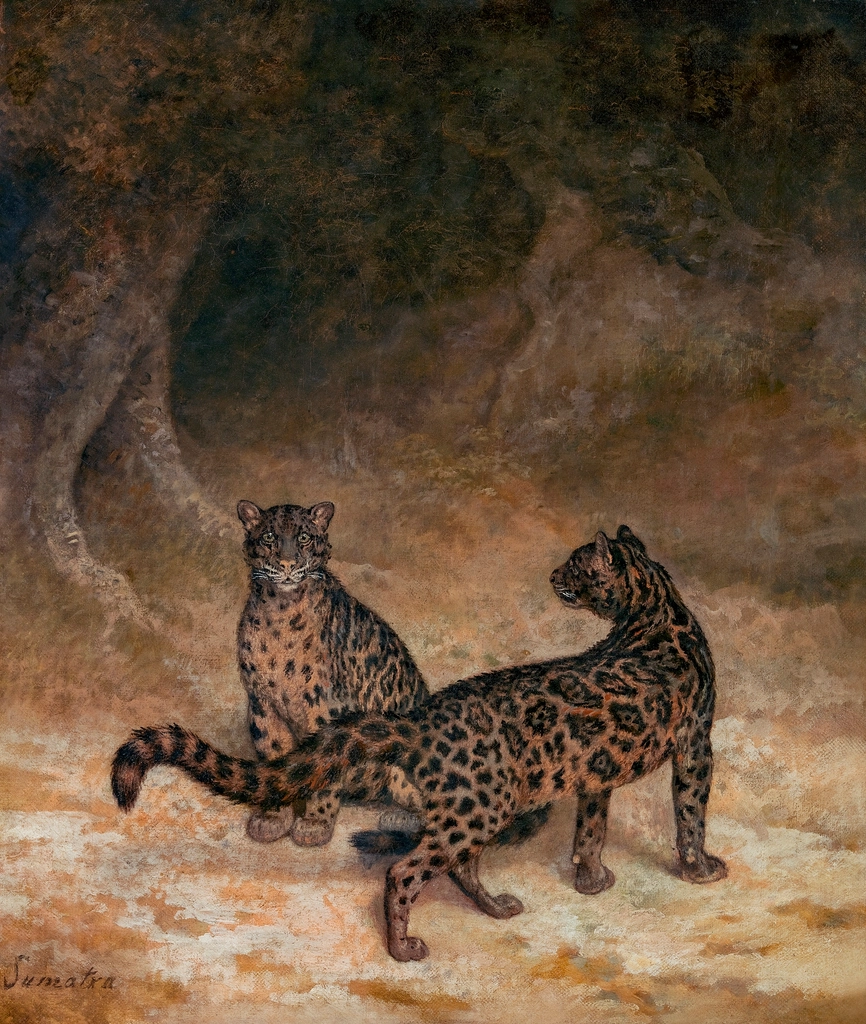
Diamantofelis, named after a fossil site renowned for its diamonds, was a sparkling example of small but mighty. Though modest in size, this agile feline was a skilled predator, using lightning-fast reflexes to snatch up birds and rodents with precision. It thrived not through brute strength, but through speed, grace, and sharp instincts. A true gem of the ancient world, Diamantofelis proves that in nature, brilliance often comes in the smallest packages.
Palaeoprionodon: The Early Climber
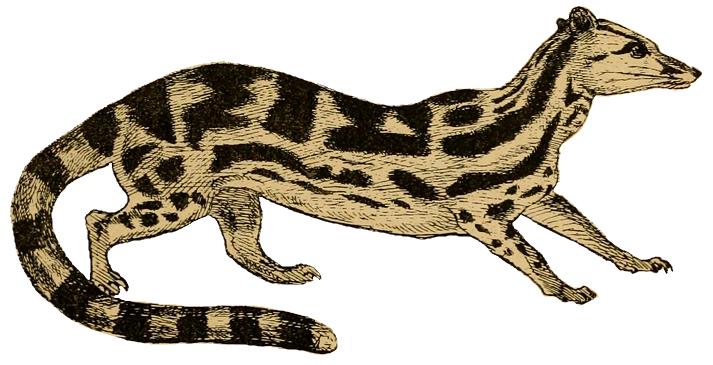
Palaeoprionodon was built for life above the forest floor, with flexible ankles and razor-sharp claws that made it a masterful tree climber. This nimble predator likely spent much of its time navigating the canopy, evading larger ground-based threats while hunting birds, eggs, and other treetop treats. Its agility and arboreal lifestyle gave it a unique edge in a competitive ecosystem. Think of it as the original treehouse cat—silent, swift, and always one step above the rest.
Patriofelis: The Bear-Cat Bruiser
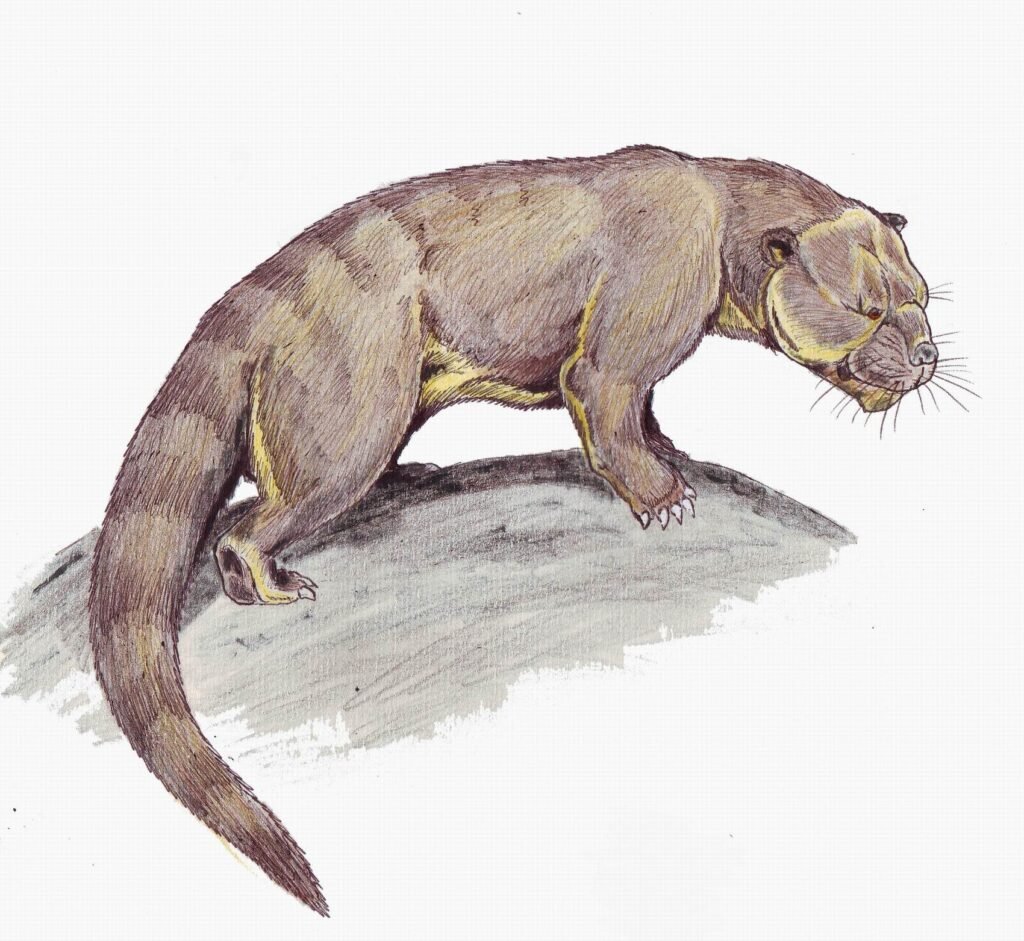
Patriofelis was a prehistoric powerhouse, resembling a fierce blend of bear and panther with its bulky frame, muscular limbs, and crushing jaws. As one of the dominant predators of its era, it relied on raw strength rather than speed, using brute force to bring down sizable prey. Its massive build and fearsome bite made it a true terror of the ancient wilds. Imagine a feline so formidable, it could go head-to-head with a grizzly—Patriofelis didn’t just hunt, it dominated.
Which of these ancient cats would you love to meet face-to-face?

Suhail Ahmed is a passionate digital professional and nature enthusiast with over 8 years of experience in content strategy, SEO, web development, and digital operations. Alongside his freelance journey, Suhail actively contributes to nature and wildlife platforms like Feline Fam, where he channels his curiosity for the Feline into engaging, educational storytelling.
With a strong background in managing digital ecosystems — from ecommerce stores and WordPress websites to social media and automation — Suhail merges technical precision with creative insight. His content reflects a rare balance: SEO-friendly yet deeply human, data-informed yet emotionally resonant.
Driven by a love for discovery and storytelling, Suhail believes in using digital platforms to amplify causes that matter — especially those protecting Earth’s biodiversity and inspiring sustainable living. Whether he’s managing online projects or crafting wildlife content, his goal remains the same: to inform, inspire, and leave a positive digital footprint.






